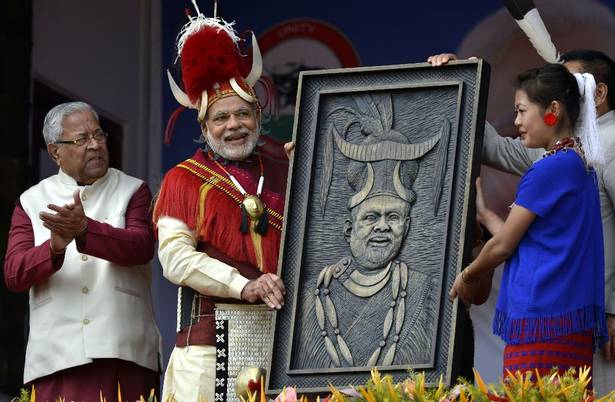In a massive and historic achievement for the Modi government, Naga groups have dropped demands for a greater Nagaland. This comes as a huge relief to the neighboring states and also gives signs for a full formal agreement in the Naga conflict. It is after 20 years of negotiations that the Nagas have arrived on an agreement with the government of India that the boundaries of the neighboring states must not be touched. The centre revealed that it is considering granting the Nagas special constitutional status with some local variation, and some changes to the Nagas in the neighboring states.
The central government’s interlocutor for NSCN (I-M), RN Ravi has reportedly conveyed to the parliamentary panel attached to the home ministry that initially the Nagas had stuck to the demands of unification of Naga-inhabitated areas and consistently maintained that there could be no solution without unification. However, they have finally reached a common ground with the government of India that the territories of the neighboring states will not be affected. Ravi further said that instead of unifying Naga-inhabitated areas, special provisions would be made for the Nagas, wherever they may be. Negotiations are going on over certain symbolic issues, which are sensitive to the government as well as the Nagas and all attempts are being made to reach a common understanding.
The government is also contemplating the details of power sharing with the government of Nagaland or other stakeholders. The interlocutor further apprised the panel that talks with the Nagas were gradually moving in a direction where boundaries of any state will not be altered or changed in anyway. The interlocutor informed that the government was moving forward in its talks with the NSCN (I-M). However, one hurdle in its way was the integration of smaller armed groups. These groups were getting desperate and it was important to integrate them but the NSCN (I-M) was threatening to pull out of negotiations if any other group was made a part of the negotiation process. The government was able to achieve this as well and six Nagaland-based armed groups were engaged in the negotiation process. However, NSCN (K) which had violated ceasefire in 2015 was not engaged as a part of the peace process. It is indeed commendable how the government managed the entire situation and despite threats by NSCN (I-M), it was able to bring other armed groups on board as far as the peace process is concerned.
The government has been involved in negotiations with the NSCN (I-M) for the last 20 years; however, it is only after the Modi government came to the helm of affairs that they have achieved this. This shows how adroitly the government has been engaging with the Nagas and has been able to bring about a major breakthrough. The government has been able to take these separatist groups in confidence on account of its extraordinary efforts in bringing the North-eastern states including Nagaland into the mainstream. Decades of step-motherly treatment with the North-eastern states had led to demands of separatism in this part of the country. However, the way Modi government has worked for the welfare of North-eastern states has definitely worked wonders for the government. It is a result of massive infrastructure building in the North-eastern states that even the separatist groups find themselves compelled to negotiate with the government and give up on unnecessary demands. It is clear that the Modi government’s tenure has altogether changed the face of North-eastern India.
